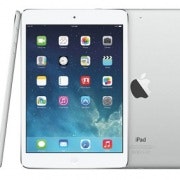REVIEW: HTC Titan 4G
HTC's love affair with screen real estate continues with the generous 4.7-inch (11.9cm) display on the Titan 4G, following in the footsteps of last year's 4.3-inch (10.9cm) HTC HD7 running Microsoft's Windows Phone 7 mobile OS.
Weighing in at 160g and measuring 10.9mm thick the Titan 4G is rather petite for a WP7 device of this size. It feels solid but not chunky and has slightly curved edges which helps it sit comfortably in your hand. Compared to phones of old I might have described the Titan 4G as slender, were it not sitting on my desk next to the slimmer Android-powered HTC One XL.
The Titan 4G is available from Telstra on a $79 per month plan or outright for $889. While it's priced like a flagship model, several aspects of the Titan 4G still feel a generation or two behind the competition, but that's mostly due to the tight hardware restrictions enforced by Microsoft to prevent WP7 turning into the fragmented mess that is Android. The Titan 4G runs Windows Phone 7.5 "Tango" (7.10.8773) out of the box, with existing handsets running "Mango" expected to receive an over-the-air Tango upgrade in the next few weeks (Vodafone is already testing it). While Microsoft's hardware standardisation is understandable, it must be said that WP7 running on the One XL would be a much more tempting proposition.

The Titan 4G is blessed with a 4.7-inch Super LCD screen, but it's hampered by Microsoft's insistence on a lowly 480x800 resolution. The image quality is excellent, with vivid colours, white whites, good contrast and wide viewing angles. The picture is a little underwhelming until you disable "auto brightness adjust". Unfortunately WP7 only lets you choose from high, medium and low brightness but it would be great to see more granular control. I find setting the screen brightness to around 80 per cent on a smartphone tends to offer the best compromise between picture quality and battery life.
The phone's menus look crisp but once you spend time with the browser you start to notice that low pixel density of 198 dots per inch (keep in mind the Android and iOS flagships are up around 320 dpi). You might not notice it when reading a straight page of text but you'll certainly see it when looking at complicated pages trying to cram in a lot of text (such as the non-mobile front page of a news site). The resolution is not intolerable and, once again, it wouldn't be so noticeable if I wasn't switching between the Titan 4G, One XL and iPhone 4.
The Titan 4G's main claim to fame is that it's Australia's first WP7 handset compatible with Telstra's 1800MHz LTE network. It enjoys mobile broadband speeds of "up to" 40 Mbps, but if you wander too far from the city you'll drop back to HSDPA. Thanks to DC-HSDPA (Dual Cell) you'll often clock in excess of 10 Mbps in the 'burbs. Of course as with any wireless technology, I found LTE speeds and latency were far from consistent. You can create a Wi-Fi hotspot for sharing access with your notebook, a feature which is still missing from Nokia's WP7-powered Lumia 800 but will hopefully come with the Tango update.

Under the bonnet the Titan 4G packs a single-core 1.5GHz Snapdragon processor with 512MB of RAM. It doesn't sound like much to get excited about but it keeps the phone running smoothly. Admittedly the handset is a little slow to load complicated webpages when put alongside the dual-core One XL (which almost triples the Titan 4G's Rightware Benchmark score).
Happy snappers will be pleased with the Titan 4G's 16-megapixel rear camera accompanied by a 1.3 MP front camera. You'll find a dedicated camera button under your right index finger in landscape mode and the phone can capture 720p video. You'll also find a micro-USB slot but not micro-HDMI or micro-SD (once again it's tempting to blame Microsoft although, to be fair, they're missing on the One XL as well). There's built-in DLNA for wirelessly streaming media but you're restricted to 16GB of storage (12GB available) so things could get a bit tight if you're a multimedia fan.
Back in the old days, HTC made the best lipstick for the pig that was Windows Mobile – creating the foundation of the Sense UI skin. But these days Microsoft forbids handset makers from reskinning the Windows Phone 7 home screen they way they do Android. You will however find a few extra HTC touches on the Titan 4G. These include Garmin Navigator with a not-so-generous seven-day trial of turn-by-turn navigation (compared to free Nokia Drive on the Lumias). There's also the HTC Watch movie rental service, which supposedly works in Australia but refuses to access the video store – even though it works on the HTC One XL. Then there's HTC Hub, an app which basically applies the Sense UI skin to mimic the look and feel of HTC's Android phones (a cheeky workaround for Microsoft's restrictions).
So what's the verdict? I'm an iPhone user who enjoys Android on the side, which makes it hard to accept the lower specs on the WP7 handsets. If a Windows Phone device was going to turn my head it would probably be Nokia's new Lumia 900. The real question is whether you're ready to make the leap to WP7. If you're a Windows Phone 7 convert with a taste for big screens and fast downloads, the Titan 4G could be the one you've been waiting for.
















